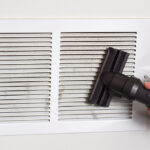As the world suffers from a respiratory pandemic, the need to breathe clean air has never been more apparent.
But, with the World Health Organization estimating that 9 out of every 10 of us live in zones where the air exceeds guideline limits of pollutants, breathable air is becoming a rarity.
Air pollution contributes to the deaths of an estimated 7 million people worldwide annually, far exceeding the number of deaths expected from COVID-19 this year, yet as a protracted public health emergency, it is woefully underreported.
Bashing Asia about poor air quality has become a global pastime in the west. While this sense of superiority has been tempered by the Chinese Communist Party (CCP)’s recent carbon neutrality pledge, according to the AirVisual and Greenpeace index released last year all of China and South Asia remain dangerously polluted.
The study was something of an exercise in negative returns, however. China is becoming comparatively less polluted while the rest of the world, particularly low and middle-income countries like India and Indonesia, industrialize and become more polluted.
And the west isn’t doing much better: while the average air quality in the US and Canada is good in global comparison, historic wildfires over the past few summers have led to a dramatic decrease in average air quality across the continent.
Europe, for its part, is struggling particularly in its east, with eight cities in the Balkans among the top 10% of the world’s most polluted urban areas.
Air pollution and the human body
The issue of dirty air has been emphasized this year by growing evidence of its link with coronavirus. Several studies have suggested that long-term exposure to poor air quality leaves people at greater risk of contracting COVID-19 and dying from it after infection.
An inquiry in the Netherlands found that even a small increase in particulate matter concentration is associated with an almost 17% increase in the COVID-19 death rate.
These findings are not at all surprising considering past data on the effect of dirty air on noncommunicable diseases.
According to the WHO, air pollution is far and away the most important environmental risk factor in exacerbating major diseases like asthma, cancer, pulmonary illnesses, and heart and lung disease.
The main substances affecting health in a polluted atmosphere are nitrogen oxides (NOx), sulphur oxides (SOx), and ozone and particulate matter — with the latter of greatest concern, as these tiny particles penetrate deep into the lungs, affecting both the respiratory and vascular systems. Both extent and duration of the exposure influence health outcomes.
The WHO estimates that each year 4.6 million deaths worldwide can be attributed to these particles alone — a number greater than the global deaths caused by automobile accidents. While we cannot yet conclusively calculate how many more coronavirus deaths can be chalked up to dirty air, it certainly didn’t improve the situation.
Air pollution and the developing world
Typically, those most at risk from this protracted public health emergency are people already disproportionately vulnerable to climate change and degradation.
A 2018 report by the UN’s Intergovernmental Panel on Climate Change (IPCC) found that air pollution and climate change are closely interlinked — as the same emissions that heat the atmosphere influence our air quality, and both outdoor and indoor pollutants are more likely to be found in low-income cities.
Low and middle-income countries generally have less rigorous policies when it comes to clean air solutions.
As their economies rush to industrialize, cities urbanize at a rate that exceeds their ability to be properly planned. Residential neighborhoods are placed near industrial plants whose fumes are poorly regulated by bifurcated and often ineffective local governments.
Full Read > Air Pollution Will Kill More People This Year Than Coronavirus. What’s to Be Done? (globalcitizen.org)













